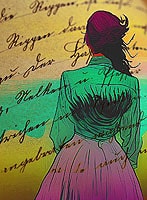On August 27, 1889, in San Francisco, [at the Olympic Athletic Club?] Jack “The Nonpareil” Dempsey was schooling Canadian fighter George LaBlanche for the Middleweight Title. Three years earlier, Dempsey had knocked the Canadian out in the 13th Round. In the 32nd round of this bare-knuckle affair, Lablanche threw a “round blow,” essentially a primitive hook. At this time many bouts were still fought on grass with cleats on. The cleats would be similar to golfer’s shoes, with three half inch spikes under the ball of the foot. Because of the danger [to the knee] of a hard pivot with the lead leg with cleats on and the danger to the bare hand of a hook, pivot hooking, as we know it, was not yet part of the boxing game. What pivots there were, were half pivots behind straights and the wicked trick punch that LaBlache threw when he missed his round swinging arm punch.
This fight was in a ring without cleats. However, fighters had been training for turf battles for so long that a pivot was still understood to be something one did with the rear foot, as a golfer or baseball batter pivots with his swing, or a stick fighter or tennis player pivots with their backhand.
There are two ways to cue for the pivot punch and three surfaces to hit with. The target is the side of the head or jaw line.
If Dempsey avoided the round blow by bobbing [ducking and popping back up], LaBlanche would have clobbered him with the wrist and heel of the outside of the hand [a hammer fist] as he reversed his weight shift and hand direction and pivoted it into the side of his head or jaw.
If Dempsey simply backed away, LaBlanche would have followed so far through with the hook that he began to pirouette [just like a karate spinning back fist] and leveled him with that. Considering the toughness of Dempsey, this was probably what did him in.
This pivot blow was also used with the elbow, the version favored by Mike Donovan, who Dempsey fought to a six round draw in Brooklyn the year before. In 2011, I was severely concussed with a spinning hammer fist in a stick sparring session. The fencing mask bent permanently from the impact.
MMA and kickboxing people are familiar with the spinning back fist, and that it is best delivered as a hammer fist, not as a back hand blow.
When Dempsey was KO’d the officials were horrified that the dastardly Canadian had felled their hero with the novel blow and declared it a foul. The Pivot punch has been a foul in boxing ever since. However, it has been retained, as two less catastrophic, but rather tactical, fouls:
1. The backhand measure, to press down on a peek-a-boo stylists’ neck after a missed punch, using the heel of the hand or even the wrist on the collarbone. The Klitchsko brothers are notorious for this foul.
2. The elbow clip. In 1976 I saw a blonde boxer—a pro whose name I cannot recall, who fought in the middle weight ranges—intentionally miss a deep right hand, his elbow passing over the slick boxer’s shoulder, knowing that the fighter that was bedeviling him was going to slide to his left along the ropes just enough to slip the shot. He then pulled back his elbow to strike behind his opponent’s ear and got away with it, stunning the man.
For kickboxing and MMA, I recommend that against a fighter who bobs under a hook or who slips a straight right or cross, you come back with the hammer fist against the side of his head, or, if his guard is up, use it to sweep the guard and follow through with your straight rear hand or hook. Practice this as a hook-hammer-right, and as a right-hammer-hook.
If you are preparing a boxer to fight in a kickboxing event, throw hammer fists off of hooks and rights just to get him used to shielding that angle, in case the kick boxer uncorks a spinning back fist or sends a round kick over the shoulder. This is a risky kickboxing weapon, but has worked well against boxers on some occasions. Of course, round kicks and hook kicks can be used by a kick boxer against a boxer who goes to the bob too much. Since the same defense covers the pivot punch and these head kicks—and since most boxing coaches, this one included, cannot kick—then throwing lateral hammer fists at him will help his kick defense too.
Practice this on the speed, double-ended or reflex bag, not the heavy bag, as that will hurt your elbow and shoulder. You already do this on the speed bag, incidentally. This is strictly a head shot. Make it short and sharp. The rear leg pivot does not transfer as much force as the lead leg pivot. But—especially in a kickboxing match—you are hitting with leather-covered bone, not glove face padding. Hitting with the heel of the hand and outside of the wrist against the side of the head or jaw is similar to the difference in kicking him with your heel or shin bone rather than with the padded instep of your shin/instep pad.
I do not recommend using the elbow to strike with, as it begs for the takedown in MMA and if you score with it, it might disable your arm by jamming the nerves [funny bone] under the elbow.
Historical Note
This strike was used in ancient boxing, particularly by pankratiasts [MMA fighters] and Etruscan boxers. It was well understood by fighting men of ancient, medieval and early modern times as the pummeling tactic of the swordsman, for which certain modern swords, such as the naval cutlass, were exceptionally well designed.
The First Boxers
The Punishing Art











